[ad_1]
At first blush, Supreme and J.Crew would seem to have little in common. One is inspired by New York City’s gritty skate culture of the ’90s; the other embraces the preppy style that first emerged at Ivy League colleges in the 1910s.
But Brendon Babenzien, who spent more than decade defining design at Supreme before taking over J.Crew’s menswear department in 2021, sees a distinct through line between them. When done well, both aesthetics should be timeless and resist trends. “Fashion is about getting you to buy more products by convincing you that what you own is no longer relevant,” he says. “But in some ways, fashion doesn’t enter the conversation at [either J.Crew or Supreme]. They’re about how it’s really cool to wear your old clothes.”
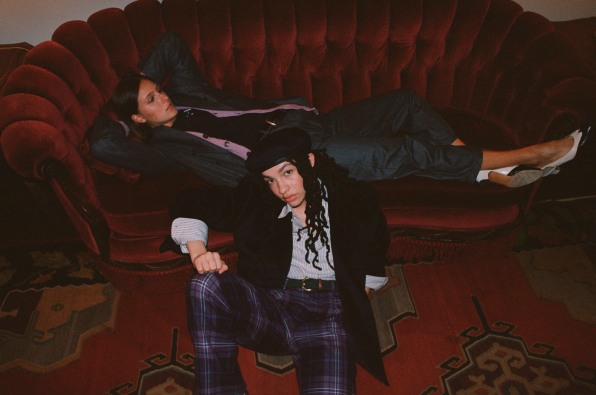
For three decades, Babenzien has been a fixture on America’s fashion landscape. He established his design chops as Supreme’s creative director, a position he held for nearly two decades. In 2015, he left the streetwear brand to reboot Noah, the preppy menswear label he launched with his wife Estelle in 2002. He continues to design for Noah and just released his fall/winter collection for the brand.
J.Crew brought him on last May, a year after it declared bankruptcy. Last month, the brand released Babenzien’s debut collection, which revives simple, unfussy menswear classics from the brand’s archives, like paisley ties, Fair Isle sweaters, and striped Oxford shirts. Fashion critics from GQ to HighSnobeity gave Babenzien high marks for his designs. There’s hope he might steer J.Crew back to its roots as a purveyor of high-quality, affordable classics that made it so successful in the ’80s and ’90s.
Babenzien’s rise coincided with the rise of fast fashion, which now dominates the industry. Pioneers like H&M and Zara built complex global supply chains in the ’90s, relying on low-wage factories in Asia that could pump out fashionable looks at bargain prices. Consumers began to treat their clothes as disposable, and garments are now piling up in landfills at the rate of a truckload a second. To compete, brands across the industry, from Old Navy to Urban Outfitters, have felt the need to churn out hundreds of new styles every season and keep prices low. Over the past five years, Chinese powerhouse Shein has supercharged the business model, updating its website with 6,000 new styles every day, generating $16 billion in revenue last year.
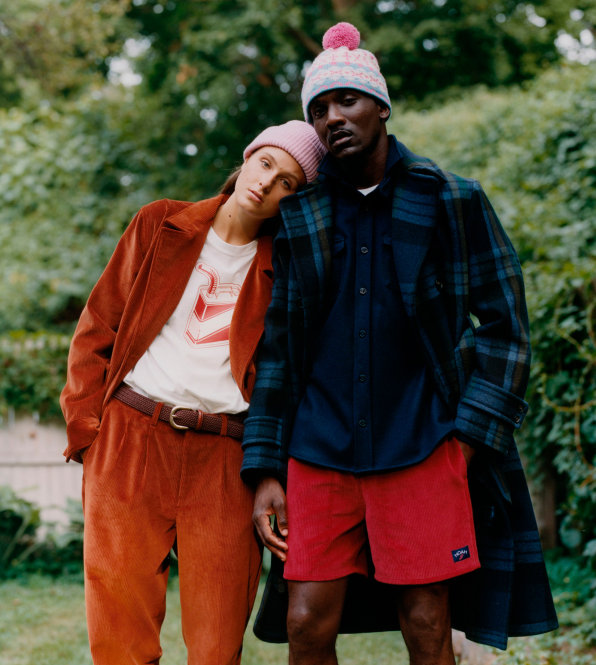
Many fashion brands are beginning to think about how to operate sustainably, from developing fabric-recycling systems to offsetting carbon emissions. Babenzien is interested in this as well. He’s used Noah as a kind of lab to explore durable materials, such as heavyweight Austrian wool and Thornproof-waxed cotton, that are designed to withstand years of heavy usage. Noah’s website prominently features a fabric directory to explain the origins and qualities of each material. He’s also chosen to manufacture products in countries with strong environmental regulations, including Italy, Canada, and Portugal. Babenzien says he wants to bring his ethical-sourcing approach to J.Crew. (The brand recently has been critiqued by Remake, a nonprofit fighting for a more ethical fashion industry, for not being transparent enough about its supply chain.)
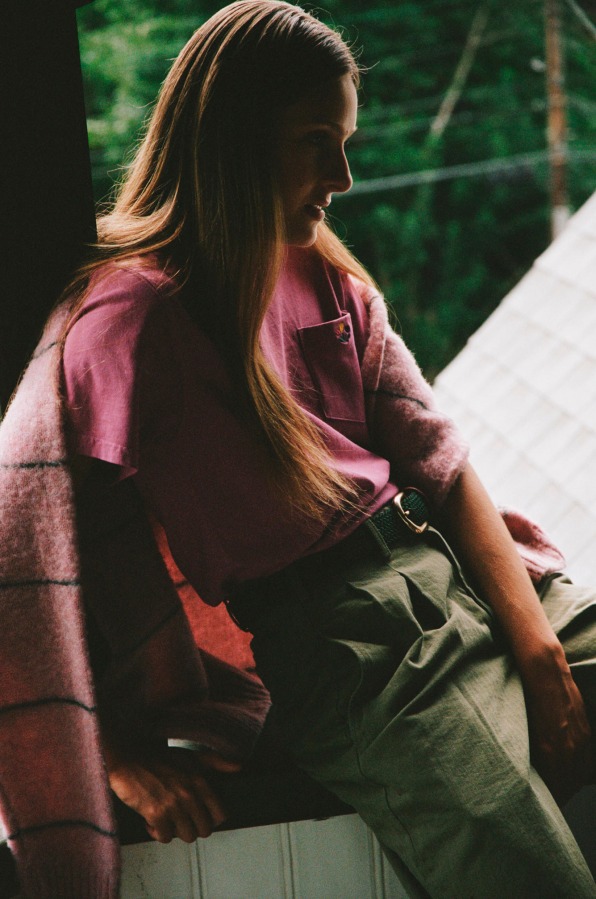
But in some ways, Babenzien is more interested in what clothes should look like if we got rid of the fast-fashion system. He believes that creating a more sustainable apparel brand begins with designing clothes that customers want to wear season after season, without fear of looking silly or dated. There are a few other designers who have been wrestling with this question. In womenswear, for instance, Eileen Fisher designs loose-fitting garments in neutral colors like black and white that are meant to evolve with a woman’s body as it changes over the decades. Jerry Lorenzo’s label, Fear of God, released an Eternals collection earlier this year, named after its unisex silhouettes in muted color ways that are meant to “live forever.”
For Babenzien, minimalism isn’t necessarily the answer. He believes it is possible to tap into aesthetics that have stood the test of time, at least over the last few decades. This has been one of his fixations at Supreme and Noah; at both brands, he’s obsessed over creating perfect-fitting hoodies and T-shirts season after season. He now brings the same approach to J.Crew. He points out streetwear and preppy menswear are examples of style born in the United States that have stayed consistent, even as trends have come and gone. In fact, over his career, Babenzien has played a role in weaving these two aesthetics together, creating a preppy-streetwear hybrid designed to be timeless. “There’s a kind of crossover in that they are both classic American,” he says. “The product is more or less what it’s always been.”
Streetwear has been embracing an evolving new country-club aesthetic for some time. But this presents an interesting challenge from a design perspective for a brand as iconic as J.Crew. Babenzien says his goal is not to stray too far from the classic garments, so he sees his role as making very small changes or pairing pieces together in ways that make them look fresh again. From a business perspective, Babenzien believes his job is to keep durable versions of these classics in stock, so customers can round out their wardrobes or replaces pieces that are worn out. “In menswear, subtlety is a serious variable,” he says. “It comes down to changing the fit of a chino very slightly, or styling it in a new way. I’m not sure I would even call it design: I make adjustments to clothes that have existed for a long time.”
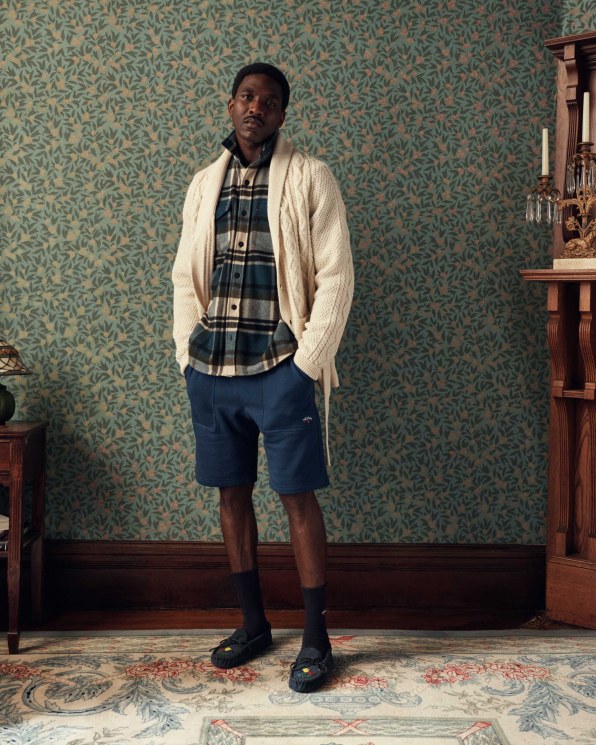
Take Noah’s new fall/winter collection, which drops this week. You find traditional men’s pieces that have been remixed in interesting ways. One look features blue chino shorts paired with a flannel shirt and a chunky cardigan, along with black moccasins and ankle socks. Another combines a purple hoodie with blue shorts and the surprising addition of shiny leather Oxford shoes. They are pieces many men already have in their closets. “It’s really about encouraging people to lean into their personal style based on how they choose to put pieces together,” he says.
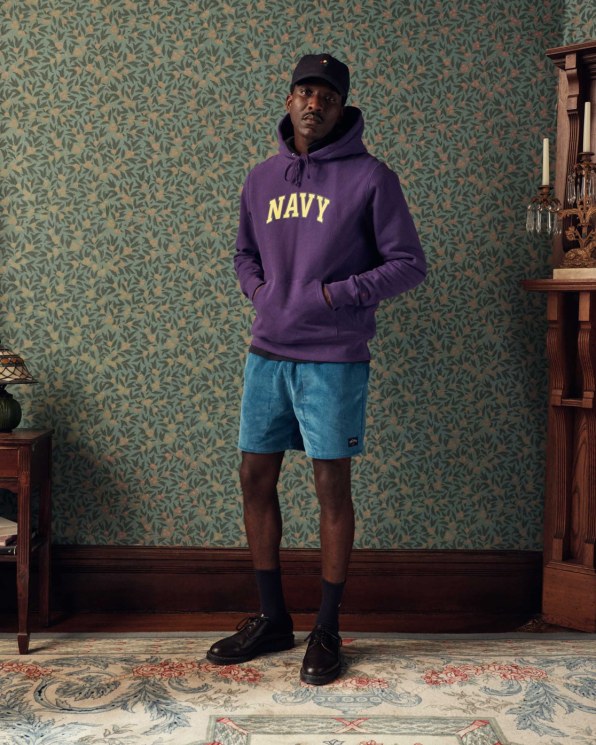
At J.Crew, Babenzien has an opportunity to bring this vision to a broader audience. The looks in his latest collection for the brand are strongly reminiscent of his work for Noah. There’s a blazer made of Irish wool and alpaca with a herringbone pattern that is styled in many different ways, from khakis to jeans. He’s also brought back pieces from the archives, including a cotton roll-neck sweater and a rubgy shirt with green, brown, and orange stripes, both of which date back to the 1980s.

One question, however, is whether a large company like J.Crew can thrive in the current fashion industry without encouraging overconsumption. J.Crew has struggled over the decade partly, experts say, because it has failed to adapt to changing consumer tastes spurred by fast fashion and social media. For a while, J.Crew abandoned its classic, preppy heritage for a more glamorous look, engineered by longtime creative director Janna Lyons. But this fashion-forward approach didn’t take off, and sales began to decline in 2014, prompting Lyons to leave her post in 2017. By May 2020, the pandemic caused sales to plummet further, causing the already struggling brand to file for bankruptcy. A few months later, J.Crew was able to exit bankruptcy, thanks to an infusion of capital from investment firms. Now, it seems, the company’s strategy is to return to making quality basics at prices that are higher than fast fashion, but lower than luxury. It’s unclear whether this approach will generate enough profits to keep institutional investors satisfied.
By bringing on Babenzien to lead menswear, J.Crew is banking on his prowess for making classic garments seem fresh and cool—which he has mastered at Noah—that will help bring the brand back to life. But designing for a small, independent fashion house is quite different from designing for a large company beholden to investors. And we’ll have to wait and see whether Babenzien will be able to stay true to his vision of encouraging J.Crew’s customers to buy fewer garments that they can wear for 5 or 10 years.
For his part, Babenzien is optimistic he’ll be able to. “Really big companies can still do the right thing,” he says. “They just have to choose to do so.”
[ad_2]
Source link

